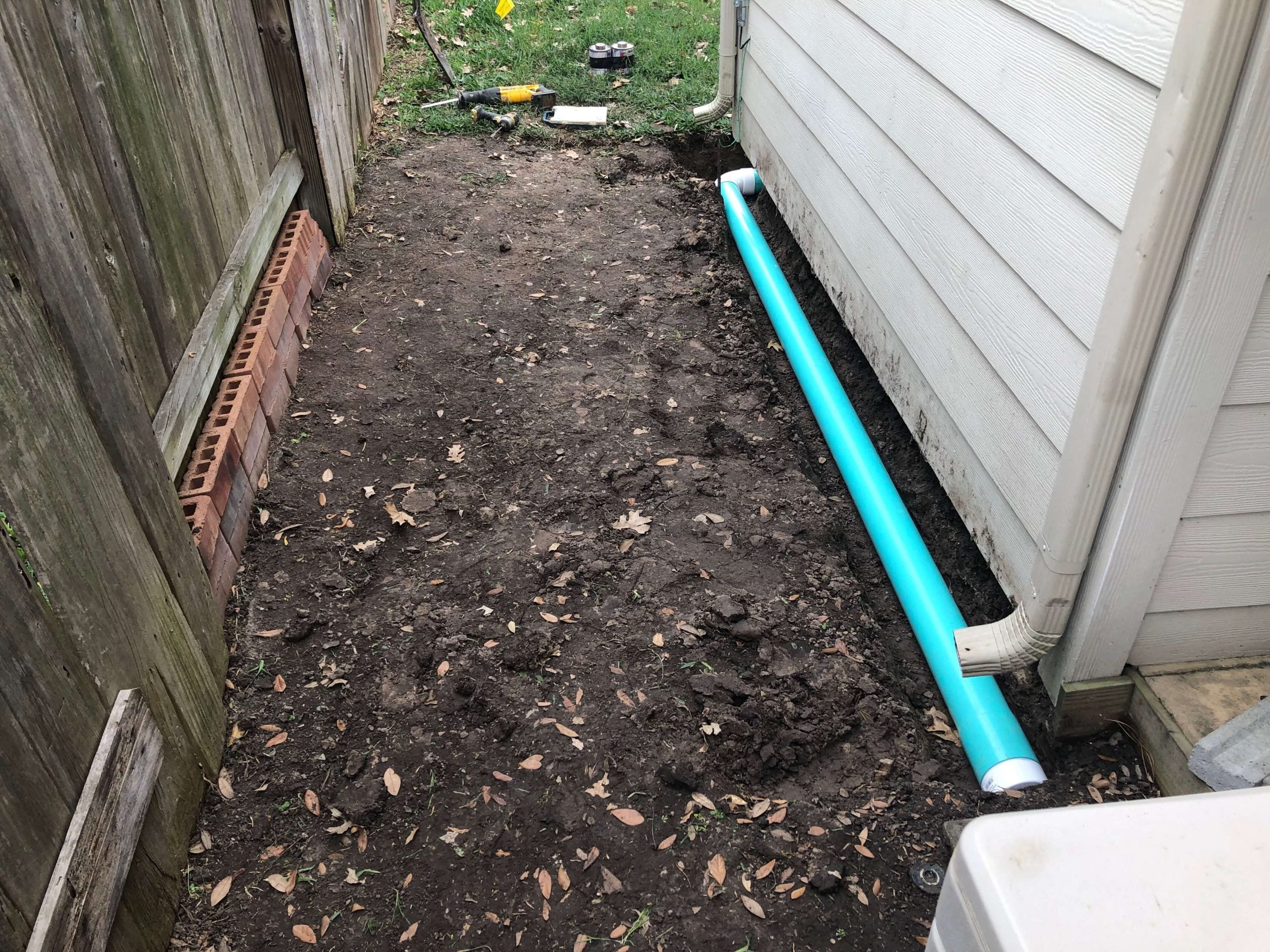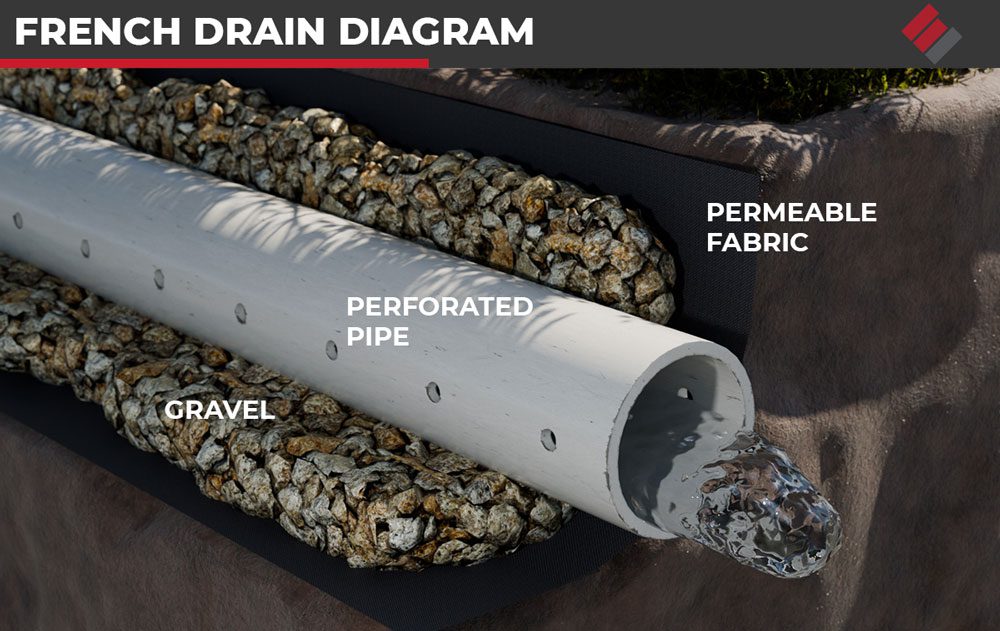Check Out Inexpensive and Long Lasting Alternatives for Your French Drain System Needs
Check Out Inexpensive and Long Lasting Alternatives for Your French Drain System Needs
Blog Article
Understanding the Importance of a Sewage-disposal Tank French Drain for Effective Wastewater Management
The integration of a septic system French drainpipe system plays a crucial role in effective wastewater management, yet its relevance is typically overlooked. This system not just promotes the therapy of sewage but likewise efficiently takes care of excess water, minimizing possible environmental threats. Recognizing the auto mechanics and benefits of such a system can illuminate its essential function in stopping dirt saturation and boosting groundwater quality. Disregarding its maintenance can lead to serious complications that might threaten these advantages. What are the certain difficulties one might deal with without this vital part?
What Is a Septic Container French Drainpipe?
A sewage-disposal tank French drainpipe is a customized water drainage system made to manage wastewater and avoid flooding in locations where conventional drainage methods may be insufficient. This system incorporates the performances of a conventional septic container with a French drain, permitting effective wastewater therapy and efficient water diversion.

Constructed utilizing perforated pipelines stocked gravel trenches, a French drainpipe assists in the activity of water away from critical areas. It permits the seepage of excess water right into the bordering dirt, promoting effective drain while shielding the septic tank's integrity. The combination of these two systems is especially beneficial in areas with heavy rainfall or poor drainage, making sure the longevity and functionality of wastewater administration systems while guarding public wellness and the environment.

Just How It Works in Wastewater Management
In wastewater monitoring, the assimilation of a sewage-disposal tank and French drain plays a critical duty in guaranteeing reliable therapy and disposal of sewage. The sewage-disposal tank serves as the very first line of protection, where wastewater undergoes first therapy with sedimentation and anaerobic digestion. Solids settle near the bottom, creating sludge, while lighter products, such as grease and oils, float to the top, creating a scum layer. This procedure reduces the organic lots of the wastewater prior to it relocates onward.
Once the wastewater is cleared up, it streams right into the French drain system, which is designed to assist in more treatment and safe dispersal. The French drainpipe contains perforated pipes buried in gravel or rock, enabling treated effluent to percolate into the bordering dirt. This natural filtering process help in the elimination of nutrients and pathogens, promoting groundwater recharge and lowering the risk of surface area contamination.
With each other, the sewage-disposal tank and French drain produce a lasting technique to wastewater management, minimizing environmental influence while ensuring compliance with health policies. This incorporated system not only protects public wellness but likewise preserves the integrity of neighborhood communities.
Advantages of a French Drain System

The French drainpipe system uses various benefits that improve both wastewater administration and environmental management. Primarily, it efficiently reroutes water away from essential locations, lowering the danger of flooding and dirt saturation that can compromise septic tanks. This aggressive drain option assists maintain the honesty of the septic system by avoiding excess dampness, which can cause system failing.
In addition, a properly set up French drain minimizes the capacity for groundwater contamination. By directing wastewater far from the building, it decreases the chance of pollutants going into regional water resources, thus securing public wellness and preserving ecological balance. The system likewise boosts the aesthetics and functionality of outside rooms by preventing water build-up, which can develop unpleasant pools or sloppy areas.
Moreover, French drains call for fairly low maintenance compared to other water drainage services, making them a cost-efficient lasting financial investment. Their adaptability allows them to be used in numerous landscapes, suiting both property and business buildings. Eventually, the advantages of a French drainpipe system prolong beyond prompt drainage demands, adding to lasting wastewater management practices and promoting ecological stewardship.
Common Issues Without a French Drainpipe
Disregarding the setup of a French drain can cause considerable difficulties in handling water circulation and preserving dirt integrity. One of the key discover this problems is the buildup of excess surface area water, which can develop merging or flooding in yards, particularly after heavy rains. This stagnation can saturate the dirt, causing disintegration and endangering the structure of neighboring structures.
Moreover, without a French drainpipe, groundwater can incorrectly penetrate septic tanks, boosting the threat of system failing. The resulting backup can cause unpleasant smells, wellness threats, and expensive repair work. Poor drainage can also advertise the development of mold and mildew and mildew, which can negatively affect indoor air top quality and posture wellness dangers to occupants.
Ultimately, the absence of a French drain can result in an array of ecological and structural concerns that necessitate substantial intervention and cost to rectify. Implementing a French drainpipe system is essential for effective wastewater monitoring and residential or commercial property protection.
Maintenance Tips for Homeowners
Normal maintenance of a French drain is crucial to ensure its ideal efficiency and longevity. House owners need to routinely check the drainpipe for any indications of obstruction or damages. This includes checking for debris accumulation, which can hinder water flow. Consider using a high-pressure water jet to clear the drain. if sediment is present.
In addition, it is crucial to maintain the area around the French drainpipe devoid of debris, such as fallen leaves, dirt, and other click over here now raw material. This will certainly stop blocking and enable reliable water drainage. Frequently cutting plants and growing far from the drainpipe can additionally minimize root intrusion.
Additionally, home owners should keep track of the efficiency of their French drain after heavy rains. Observing exactly how well water is guided away from the septic tank can give insights into its functionality. It might indicate a demand for specialist evaluation. if pooling water is noted.
Last but not least, think about organizing periodic expert examinations to examine the total problem of the drainpipe. Such proactive steps will aid maintain the efficiency of your French drain and ensure efficient wastewater monitoring for years ahead.
Final Thought
In conclusion, the septic storage tank French drainpipe system plays an important role in reliable wastewater management by making certain appropriate treatment of sewer and efficient water diversion. Overall, the septic container French drain stands for a lasting service that profits both business and domestic residential or commercial Visit Website properties across numerous landscapes.
The assimilation of a septic container French drainpipe system plays a critical role in effective wastewater monitoring, yet its relevance is usually overlooked. Ultimately, the benefits of a French drain system prolong beyond immediate drainage demands, contributing to lasting wastewater administration methods and promoting ecological stewardship.
Moreover, without a French drainpipe, groundwater can poorly infiltrate septic systems, enhancing the danger of system failure - French Drain System. Executing a French drainpipe system is important for reliable wastewater management and property security
In final thought, the septic tank French drainpipe system plays an important duty in efficient wastewater management by guaranteeing correct treatment of sewage and effective water diversion.
Report this page